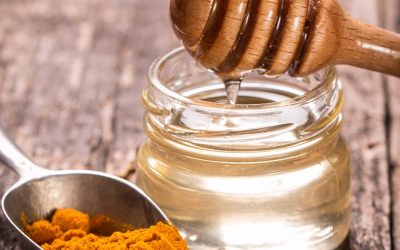Manuka Honey
Coming from manuka, a tree that grows only in New Zealand and southeastern Australia, manuka honey is different from other honeys and it has gained a well deserved reputation.
With a really strong flavor, people often described it as: earthy, oily, herbaceous, rich and complex, heather, aromatic, mineral and slightly bitter.
The honey it is made from our honey bees Apis Mellifera, from two plants: Leptospermum scoparium and/or Leptospermum polygalifolium. They grow uncultivated throughout New Zealand and southeastern Australia.
Is there a difference between manuka and mānuka?
No. The macron above “a” in mānuka is used to assist in pronunciation. Food businesses can use “manuka” or “mānuka” on food labels, referring to the same type of honey.
Berringa, the super manuka honey, is the name of the honey which is made only from Leptospermum polygalifolium. It’s like a cousin of Leptospermum scoparium.
Kanuka Honey, comes also from Australia, but shouldn’t be confused with manuka honey. Kanuka honey is made from a different tree, Kunzea ericoides, a cousin of Leptospermum, looking a lot like it. Some people say this type of honey is more valuable than manuka.
Manuka honey is dark, whereas kanuka honey is pale yellow and clear, with a delicate, sweet, slightly aromatic aroma and flavor.
How is manuka honey different than other honeys?
All honeys have an antibacterial activity, but manuka honey has a non-peroxide activity which comes from the specific flower, and is quite different from the enzyme / peroxide activity found in the other honeys. The non-peroxide antibiotic activity is due to methylglyoxal (MGO) and bee defensin. Most honeys contain very low levels of MGO, but manuka honey contains very high levels. Thus the antibacterial activity is doubled.
Yet, this component is not the only responsible for the honey’s antibiotic activity. In researches, after neutralization of GMO, manuka honey retained bactericidal activity due to unknown factors. Thus, MGO cannot be directly linked and stated as the main content to the antimicrobial and antibacterial activities in manuka honey.
Though it is considered a superfood, or a wonderfood, please read the labels carefully when buying, because not all manuka honeys contain this unique non-peroxide activity.
Characteristics of manuka honey:
• A dark colour, greater than 62 mm pfund.
• Conductivity range of 347-867 μS/cm.
• A typical flavour specific to manuka, mineral, slightly bitter.
• A typical aroma of damp earth, heather and aromatic.
• It contains mānuka-type pollen.
• It has high amounts of dihydroxyacetone (DHA) and methylglyoxal (MG). They are to be found in other honeys, too, but in such smaller quantities that can be almost neglected.
• Other compounds: methylsyringate, leptosin, glyoxal, 3-deoxyglucosulose.
• Leptosperin and lepteridine are definitive fluorescence chemical markers for authentication of Mānuka honey
Moisture content: 18.70%
pH: 3.20–4.20
Total reducing sugars: 76.00%
Glucose: 36.20%
Fructose: 40.00%
Sucrose: 2.80%
Maltose: 1.20%
Calcium: 1.00%
Potassium: 1.00%
Sodium: 0.0008%
Magnesium: 1.00%
Specific gravity: 1.39
Electrical conductivity (mS/cm): 0.53
HMF [hydroxylmethylfufural] (mg/kg): 40.00
Ash content (g/100 g): 0.03
Phenolic compounds:
flavonoids: pinobanksin, pinocembrin, chrysin, luteolin, quercetin, 8-methoxykaempferol, isorhamnetin, kaempferol and galangin;
Total Flavonoids: 71.90 ± 0.03 mg CAE/kg
Phenolic acids: phenylacetic acid, phenyllacticacid, 4-hydroxybenzoic acid, kojic acid, 2-methoxybenzoic acid, syringic acid, and 4-methoxyphenyllactic acid.
Total Polyphenols: 0.89 ± 0.01 g GAE/Kg
Specific compounds present only in Leptospermum Scoparium, the floral source of New Zealand manuka honey: 3-Phenyllactic acid, 2’-Methoxyacetophenone, 2-Methoxybenzoic acid, 4-Hydroxyphenyllactic acid. The science definition also includes a DNA marker.
The therapeutic use of manuka honey
With the highest number of antioxidants and antibacterial properties, this honey is even considered to be the most powerful natural antibiotic, with a broad spectrum.
Read the labels carefully, not all manuka honey has UMF.
Although it is such an incredibly good antibiotic, and so efficient in all skin wounds, burns, etc, persons with diabetes should not eat manuka honey, because of the GMO factor. GMO stands for methylglyoxal, a highly toxic substance. The research haven’t yet concluded if this substances in combination with an unknown component found in honey, is still toxic to the human cells, after ingestion.
We should be very cautious with this, because the quantity of MGO, which is very high (over 1000ppm) increases in time. Read more about the laboratory tests done by now, together with the available clinical trials, is the post: Is manuka honey safe to eat.
Remember to read the labels properly and choose the best you need.
Table Grade: 100 – 400 MGO (5 – 15 UMF) – this is for eating!
Antibacterial Grade: 400 – 850 MGO (15 – 20 UMF) – this is for skin therapy!
Superior Antibacterial Grade: 850 MGO and above (25 UMF and above) – this is for very bad wounds.
References and pictures sources:
http://en.wikipedia.org/wiki/M%C4%81nuka_honey;
http://www.independent.co.uk/incoming/manuka-honey-is-the-bees-knees-1690599.html;
https://www.thehoneyfarm.com.au
Strawberry-Tree Honey Induces Growth Inhibition of Human Colon Cancer Cells and Increases ROS Generation: A Comparison with Manuka Honey.



